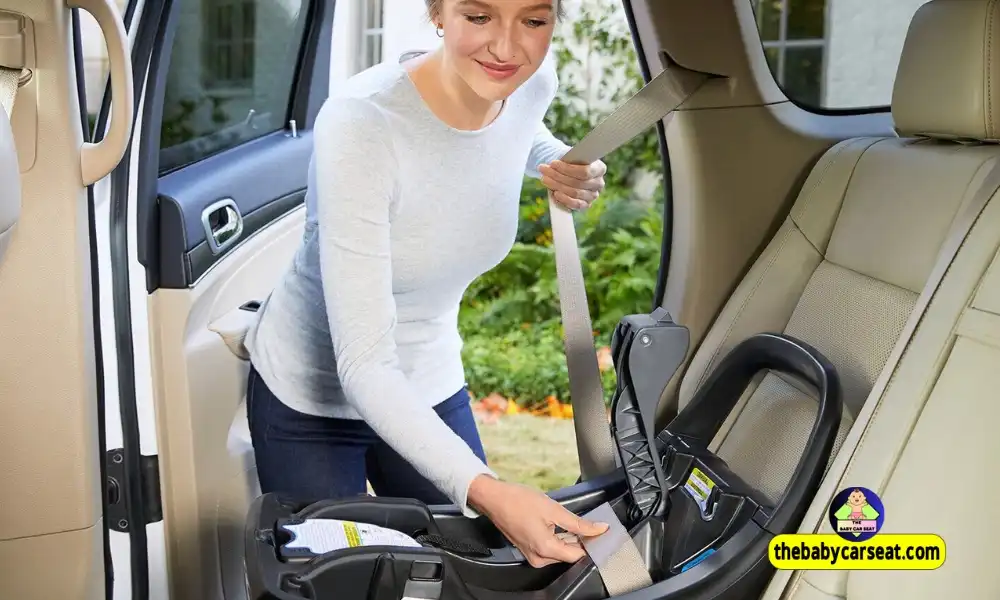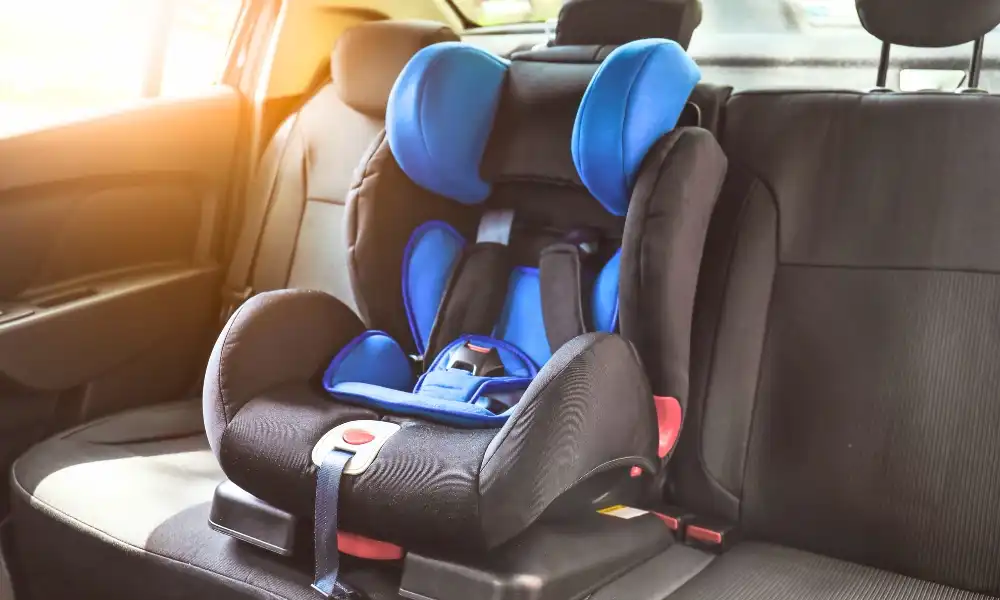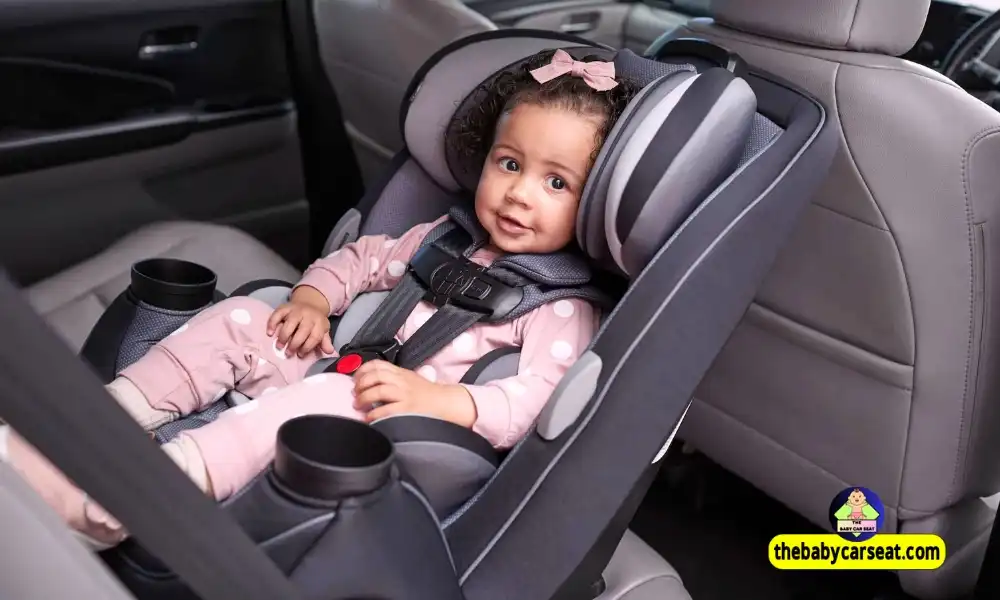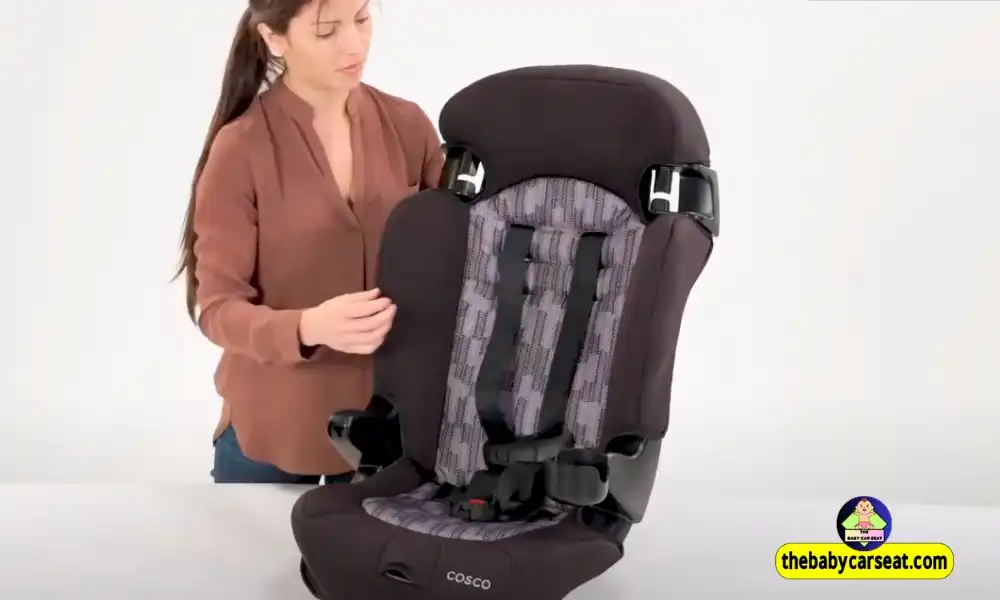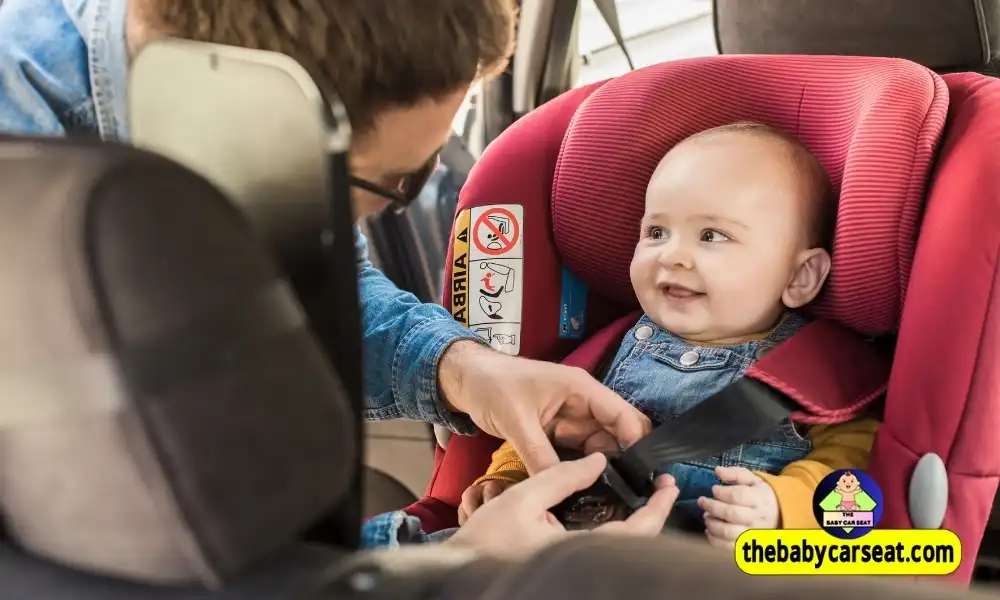When is My Baby Too Big for Infant Car Seat – Wondering when your baby is too big for an infant car seat? It’s a crucial question for every parent.
Knowing when to switch ensures your child’s safety and comfort. Babies grow fast. One day, they fit snugly in their infant car seat, and the next, they seem to outgrow it. Understanding the right time to move to a bigger car seat is essential.
Most infant car seats have weight and height limits. Exceeding these limits can make the seat unsafe. So, how do you know it’s time? Look for signs like your baby’s head reaching the top of the seat or exceeding the weight limit. This blog will guide you through these signs, ensuring your baby stays safe on every journey.
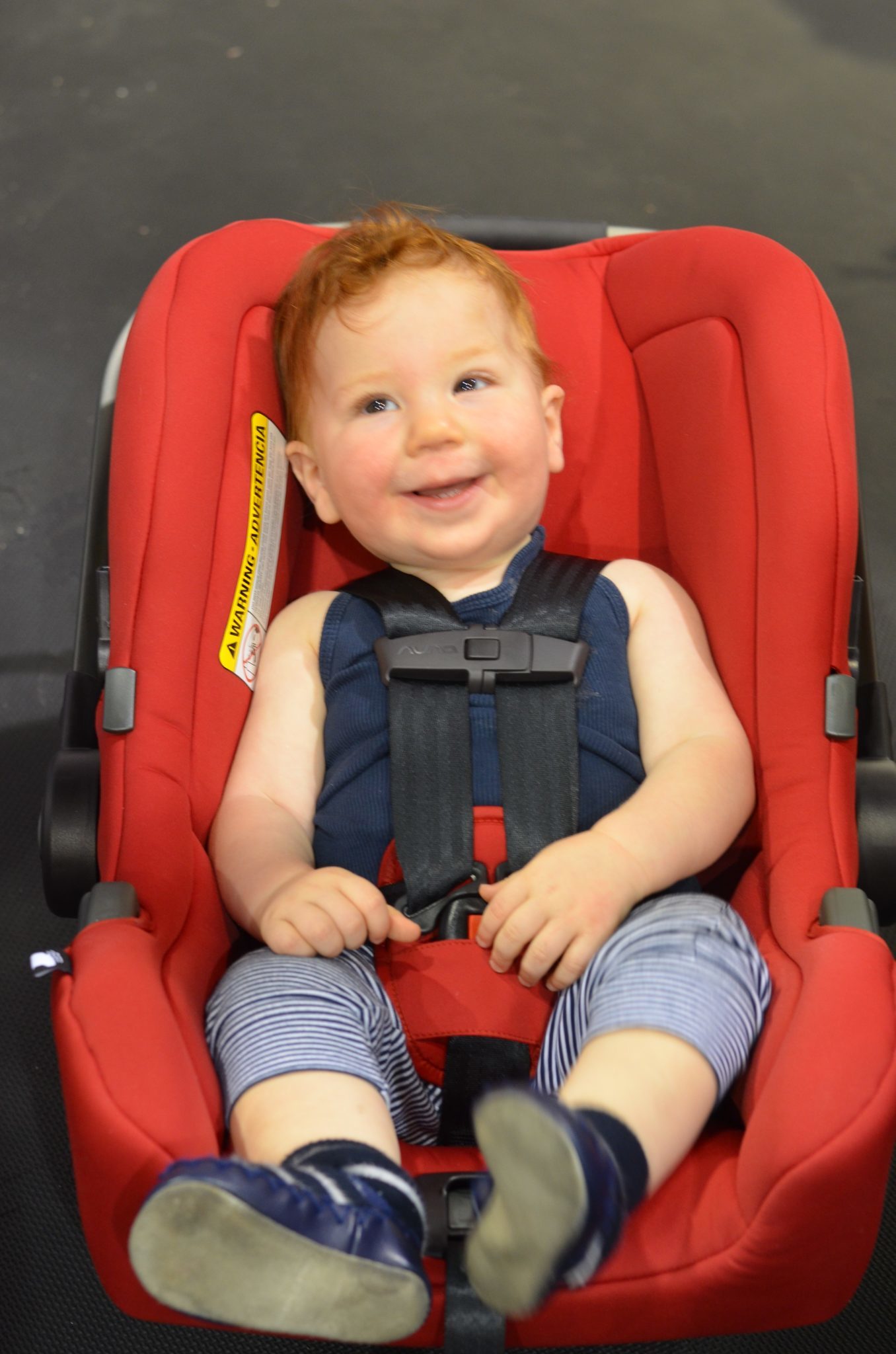
Credit: thecarseatlady.com
Introduction To Infant Car Seats
Infant car seats are essential for your baby’s safety during travel. These seats are designed to protect your baby during car rides. Understanding when to switch from an infant car seat is crucial for safety.
Purpose Of Infant Car Seats
Infant car seats provide a safe place for your baby while traveling. They are specifically designed for infants and small babies. The primary purpose is to protect your child in case of an accident.
- Safety: Protects baby during car rides.
- Comfort: Ensures a comfortable ride for the baby.
- Convenience: Easy to carry and install.
Safety Standards
Infant car seats must meet strict safety standards. These standards ensure that the seats are safe for your baby. Various organizations set these standards to protect children.
| Organization | Standard |
|---|---|
| National Highway Traffic Safety Administration (NHTSA) | FMVSS 213 |
| European Safety Standards | ECE R44/04 |
Always check if your infant car seat meets these standards. This ensures the seat provides the necessary protection. Look for labels or certification marks to confirm compliance.
Signs Your Baby Has Outgrown The Car Seat
As your baby grows, it’s crucial to ensure their car seat remains safe. Recognizing the signs that your baby has outgrown their infant car seat is essential for their safety. Below are key indicators to look out for.
Height Limits
Most infant car seats have specific height limits. Check the car seat manual for the maximum height allowed. If your baby’s head is within one inch of the top, it’s time for a new seat. This space is critical for head protection during a crash.
Weight Limits
Infant car seats also have weight limits. These limits are usually between 22 to 35 pounds. Exceeding this weight means the car seat can no longer provide adequate protection. Always check the car seat label for the weight limit.
| Car Seat Model | Height Limit | Weight Limit |
|---|---|---|
| Model A | 30 inches | 30 pounds |
| Model B | 32 inches | 35 pounds |
To ensure your baby’s safety, always monitor their growth. Regularly check their height and weight. Replace the infant car seat when they exceed the specified limits. Your baby’s safety depends on it.
Transitioning To A Convertible Car Seat
Transitioning from an infant car seat to a convertible car seat is a significant step for both you and your baby. It ensures your child’s safety and comfort as they grow. Knowing when to make this transition is crucial. Let’s explore the benefits of convertible seats and the right time to make the switch.
Benefits Of Convertible Seats
Convertible seats offer several advantages:
- Extended Use: They can be used from infancy to toddlerhood.
- Cost-Effective: One seat covers multiple stages of your child’s growth.
- Rear and Forward-Facing: They support both rear and forward-facing positions.
- Safety: They often have higher weight and height limits, ensuring better protection.
When To Make The Switch
Knowing when to transition is vital. Here are key indicators:
- Weight and Height Limits: Check the limits on your infant seat. If your baby exceeds these, it’s time to switch.
- Head Position: If your baby’s head is within an inch of the top of the seat, it’s no longer safe.
- Age: Around one year or when they outgrow the infant seat, most babies are ready for a convertible seat.
| Indicator | Sign |
|---|---|
| Weight Limit | Baby exceeds seat’s weight limit |
| Height Limit | Baby’s head is within an inch of the top |
| Age | Around one year |
Transitioning to a convertible car seat ensures ongoing safety and comfort for your growing baby.
Proper Installation Techniques
Ensuring your baby’s car seat is installed correctly is crucial for safety. Proper installation minimizes risks during travel. Understanding proper techniques can make a significant difference.
Rear-facing Vs. Forward-facing
Choosing between rear-facing and forward-facing car seats depends on your baby’s age, weight, and height. Rear-facing seats are generally safer for infants and young toddlers. They offer better support for the head, neck, and spine.
Experts recommend keeping your baby in a rear-facing seat until they outgrow it. Typically, this means until they reach the seat’s height or weight limit. Forward-facing seats are suitable for older toddlers who have outgrown their rear-facing seats.
Securing The Car Seat
Properly securing the car seat is essential. Follow these steps for correct installation:
- Place the car seat in the back seat of your vehicle. This is the safest spot.
- Use either the vehicle’s seat belt or the LATCH system (Lower Anchors and Tethers for Children). Do not use both.
- Ensure the car seat does not move more than an inch from side to side.
- Check the angle indicator on the car seat. Adjust the angle as needed.
Always read both your vehicle’s manual and the car seat’s manual. They provide specific instructions for your particular model. Regularly inspect the car seat’s installation to ensure it remains secure.
Common Installation Mistakes To Avoid
Avoid these frequent mistakes to ensure your baby’s safety:
- Not tightening the seatbelt or LATCH system enough.
- Incorrect angle for rear-facing seats.
- Loose harness straps on your baby.
Regularly check these elements and adjust as your baby grows. Proper installation is vital for protecting your baby during car rides.
Understanding Car Seat Expiry Dates
It’s important to know when your baby is too big for an infant car seat. One crucial factor many parents overlook is the car seat expiry date. Knowing and understanding these dates can ensure your child’s safety.
Why Expiry Dates Matter
Expiry dates on car seats are not just a marketing gimmick. They exist for safety reasons. Materials in car seats can degrade over time. Exposure to sunlight, heat, and cold can weaken the seat’s structure. An expired car seat may not protect your child in an accident.
Manufacturers set expiry dates to ensure the seat remains effective. They want to guarantee the seat meets current safety standards. This also accounts for advancements in safety technology. Using an expired seat means you might miss out on these improvements.
How To Check Expiry Dates
Checking your car seat’s expiry date is simple. The information is usually on a label or sticker on the seat. Look for phrases like “Do not use after” or “Expires on.”
Here’s a quick guide to help you find the expiry date:
- Check the base of the seat.
- Look at the back of the seat.
- Inspect the underside of the seat’s padding.
Some seats might have the expiry date embossed into the plastic. If you can’t find it, consult the user manual or the manufacturer’s website. They often have detailed instructions.
| Brand | Typical Expiry Period |
|---|---|
| Brand A | 6 years |
| Brand B | 8 years |
| Brand C | 10 years |
Remember, using a car seat past its expiry date puts your child at risk. Always ensure your car seat is within its valid period. This simple step can make a big difference in your child’s safety.
Common Mistakes To Avoid
Ensuring your baby’s safety in the car is vital. Many parents make mistakes with infant car seats. These errors can put your child at risk. Here are some common mistakes to avoid.
Incorrect Harness Position
One of the most frequent mistakes is the incorrect harness position. The harness should be at or below the baby’s shoulders. If the harness is too high or too low, it won’t protect your baby properly. Use the slots that are at the correct height for your baby.
Check the harness position every time you place your baby in the seat. Babies grow quickly, and the harness may need to be adjusted often.
Loose Installation
A loose installation of the car seat is another common error. The car seat should not move more than one inch in any direction. Many parents do not tighten the seat enough. This can cause the seat to shift in a crash, reducing its effectiveness.
To ensure a tight fit, use your knee or body weight to press down on the seat while tightening the straps. Always check the installation after securing the seat in the car.
Legal Requirements And Recommendations
Ensuring your baby is in the correct car seat is crucial for their safety. Understanding the legal requirements and recommendations can guide you in making the right choice. Here, we will cover the essential details about state laws and professional guidelines for infant car seats.
State Laws
Each state in the US has specific laws regarding car seat use. These laws are designed to protect your child while traveling.
- Most states require infants to ride in a rear-facing car seat until age 2.
- Some states have height and weight requirements for transitioning to a different seat.
- Fines and penalties exist for not complying with these laws.
Check the specific laws in your state to ensure compliance. You can find these details on your state’s Department of Transportation website.
Professional Guidelines
Several organizations provide guidelines on car seat safety. These guidelines often go beyond legal requirements.
The American Academy of Pediatrics (AAP) recommends:
- Keeping your child in a rear-facing car seat as long as possible.
- Switching to a forward-facing car seat when they outgrow the rear-facing seat.
- Using a booster seat until your child is big enough for a seat belt.
Additionally, the National Highway Traffic Safety Administration (NHTSA) advises:
- Following the car seat manufacturer’s height and weight limits.
- Ensuring the car seat is properly installed.
- Checking for any recalls on your car seat model.
Adhering to these professional guidelines can significantly enhance your child’s safety on the road.

Credit: community.babycenter.com
Tips For Ensuring Maximum Safety
Ensuring your baby’s safety in the car is crucial. As your baby grows, you must know when to transition from an infant car seat. Tips for ensuring maximum safety can help you make informed decisions and keep your little one secure during every ride.
Regular Maintenance
Regular maintenance of your infant car seat is essential. Check the seat for any wear and tear. Inspect the straps, buckles, and padding. Ensure everything is in good condition. If you find any damage, replace the car seat immediately.
Clean the car seat regularly. Follow the manufacturer’s instructions for cleaning. This helps maintain the seat’s integrity and hygiene. Remove and wash the padding. Wipe down the plastic parts. Avoid harsh chemicals that can weaken the material.
Always check the car seat’s expiration date. Infant car seats have a lifespan. Using an expired seat can compromise safety. You can find the expiration date on the seat or in the manual.
Car Seat Accessories
Car seat accessories can enhance safety and comfort. Use a head support cushion for newborns. It helps keep their head stable. Ensure the cushion is compatible with your car seat. Avoid using aftermarket products not approved by the car seat manufacturer.
A car seat canopy can protect your baby from the sun. It provides shade and keeps the seat cool. Make sure it does not interfere with the seat’s straps or buckles.
Consider a car seat mirror. It allows you to see your baby while driving. Place the mirror on the back seat headrest. Make sure it is securely fastened and does not distract you while driving.
| Accessory | Purpose | Safety Tip |
|---|---|---|
| Head Support Cushion | Stabilize baby’s head | Ensure compatibility with car seat |
| Car Seat Canopy | Provide shade | Do not obstruct straps |
| Car Seat Mirror | Monitor baby | Secure firmly, avoid distraction |
By following these tips, you ensure your baby’s safety on every journey. Regular maintenance and the right accessories can make a big difference.

Credit: mamanloupsden.com
Frequently Asked Questions about When is My Baby Too Big for Infant Car Seat
How Do I Know My Baby Outgrew The Infant Car Seat?
- Check the weight and height limits on the car seat manual. Most infant car seats have limits of 30-35 pounds and 30-32 inches.
What Are Signs My Baby Is Too Big For The Car Seat?
- If your baby’s head is within an inch of the top, it’s time to switch. Also, if they exceed the weight limit, change seats.
When Should I Switch To A Convertible Car Seat?
- Switch to a convertible car seat when your baby outgrows the infant seat. Usually, this happens around 1 year old.
Can A Tall Baby Outgrow An Infant Car Seat Faster?
- Yes, a taller baby might outgrow the car seat height limit sooner. Always check both height and weight guidelines.
Conclusion
Making sure your baby is safe is crucial. Monitor their car seat size. Check height and weight limits regularly. Always follow the manufacturer’s guidelines. Switching to a bigger seat keeps your baby comfortable. Safety should be your top priority. A proper fit prevents injuries.
Transition to a convertible car seat when needed. Every baby grows differently. Stay informed and be proactive. Your baby’s safety depends on your vigilance. Keep them secure and enjoy the ride.



